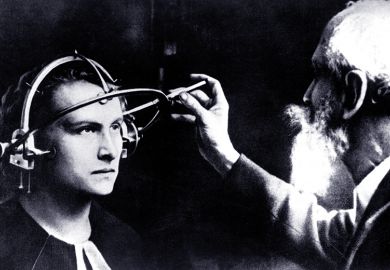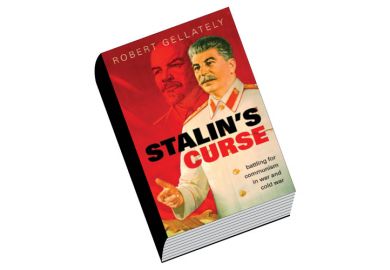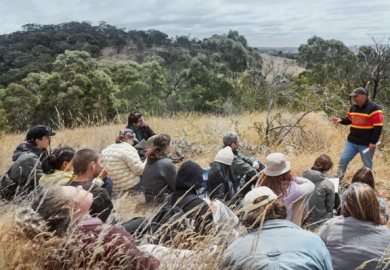So full of diverse incident was the life of John Burdon Sanderson (Jack) Haldane (1892-1964) that a novelist inventing it would be advised to sit in a darkened room and calm down.
An old-Etonian Marxist, he (along with Ronald Fisher and Sewall Wright) established the new, highly mathematical field of population genetics, though his only degree was in Classics. He conducted dangerous experiments for the Royal Navy on the physiological risks of diving and submarining, often with himself as subject, but was still suspected of being a Russian spy. He was a prolific populariser of and proselytiser for science. In 1924, he published Daedalus; or, Science and the Future, which impressed Albert Einstein and Arthur C. Clarke among others. The University of Cambridge unsuccessfully charged him with gross immorality, because he had been cited as co-respondent in the divorce proceedings of Charlotte Burghes, who became his first wife. He was a large, clumsy, generous man, whose natural reaction to any orthodoxy was to oppose it.
Population genetics achieved a unification of Mendelian genetics and Darwinian evolution, as well as having important implications for public health, clinical medicine and agriculture. Haldane also made significant contributions to chemical genetics and the mathematical analysis of evolution. Most of his career was spent within the golden triangle of Oxford, Cambridge and University College London (now UCL).
Haldane is vibrantly brought to life by Samanth Subramanian, in a book started during a fellowship at the University of Pennsylvania’s Center for the Advanced Study of India. As suggested by the subtitle, his emphasis is on the relationships between Haldane’s science and his politics. Haldane believed that since both science and Marxism offered pathways to a better future, they must be compatible. Yet achieving a synthesis of Marxist “diamat” (dialectical materialism) and the scientific method was not easy. The fact that the increasingly authoritarian Stalin ruled the only Marxist state proved challenging for some of Haldane’s contemporaries on the left – and particularly problematic for a geneticist.
The 1940s saw the emergence of a new star of Soviet science, Trofim Lysenko. He claimed to have rewritten the laws of genetics to make them more compatible with diamat, and in a way that also offered the prospect of improved yields of basic foodstuffs in the Soviet collective fields. Not surprisingly, Stalin became his firm supporter, and the apparatus of his totalitarian state allowed Lysenko, by early 1948, to silence or purge all those who would not accept the new socialist genetics.
Across the world, however, many scientists refused to accept that nature had yielded to the diamat. Haldane was by now one of the world’s leading geneticists, but was also a prominent communist through his public appearances, writings and position as chairman of the editorial board of the USSR-sponsored newspaper The Daily Worker. So where did he stand on Lysenko? In November 1948, he gave a radio talk that exposed his divided loyalties. He said that he disagreed with Lysenko on many points, but thought that “some of his most profound arguments were correct”. Reports of Stalinist purges of prominent scientists such as his friend Nikolai Vavilov, meanwhile, “were only rumours”.
As a result, Haldane found himself spurned by both scientists and Marxists, though for opposite reasons. Knowing that ultimately he could not accept Lysenko’s version of genetics, he resigned his membership of the Communist Party of Great Britain in 1950. In 1957, he and his second wife, Helen Spurway, 22 years his junior, left England to settle in India. He regarded the newly independent country, under Jawaharlal Nehru, as a Petri dish in which scientific socialism would flourish. Settling first in Calcutta and then in Bhubaneswar in the eastern state of Odisha, the Haldanes returned full time to research. But Jack developed colorectal cancer and died in 1964.
Subramanian argues that to understand Haldane’s attitude to Lysenko is to understand Haldane, but this seems slightly unfair. The Lysenko affair showed an uncharacteristically indecisive Haldane, trying to have it both ways. And even in his youth the possibility of genetic manipulation was starting to throw up much deeper ethical issues. Consider his approach to eugenics, which attempts to “improve” the human population by selective breeding, and which was then much in vogue. In 1908, while JBS was still at much-loathed Eton, a Royal Commission on the Care and Control of the Feebleminded urged the British state not to allow the “mentally deficient” to procreate. The Mental Deficiency Act of 1913 resulted in 65,000 people so categorised being locked up. Though he had no principled objection to eugenics, Haldane’s analysis throughout his life was nuanced and practical. He knew that its chances of significant success, even in its own terms, were much lower than many wanted to admit. And he recognised in 1935, before Nazi atrocities in the name of eugenics became known, that some of its proponents were potentially very dangerous indeed.
Is a career as diverse and controversial as Haldane’s possible today? Without a science degree, almost certainly not. Genetics has changed a lot, with genomics now at its cutting edge. It has become “big science”, carried out in larger groups. A modern JBS might not find this congenial, but could perhaps still find a niche somewhere such as Cambridge’s Laboratory of Molecular Biology. His diving research would (quite reasonably) fall foul of health and safety regulations. His anti-authoritarian instincts might not sit well in the worlds of teaching and research assessment. But his passion to tell his fellow humans about what science can do, and how it does it, could thrive. We can rejoice that communication of science to “the public” is now a substantial industry, with its own gurus and array of glittering prizes and awards.
A Haldane of today would be unlikely to be a Marxist. The CPGB collapsed at the same time as the USSR, in 1991. Its successor, the Communist Party of Britain, had 856 members in 2019. Enthusiasm for many political ideals has declined among scientists and more generally because of all the cases where theory and practice have proved so wildly divergent. Yet a Haldane de nos jours might find a dominating cause in action to reverse climate change or promote biodiversity, in gender or racial inequality – or even in the defence of the scientific enterprise itself, in our postmodern, post-truth society.
I have a small bee in my bonnet that biographies of scientists often tell us too little about the science that made their subject interesting in the first place. Subramanian is conscientious in describing Haldane’s genetics research, but clearly finds other aspects of his life more interesting. I do, too. This is the second major study of Jack Haldane within five years. In Popularizing Science: The Life and Work of JBS Haldane, Krishna Dronamraju provided an excellent chronological picture. Yet he worked with Haldane for a number of years, while Subramanian is not old enough to have met his subject. So it is perhaps surprising that the latter brings Jack Haldane, his eventful life and outsize personality the more vividly to life.
Richard Joyner is emeritus professor of chemistry at Nottingham Trent University.
A Dominant Character: The Radical Science and Restless Politics of J. B. S. Haldane
By Samanth Subramanian
Atlantic Books, 400pp, £20.00
ISBN 9781786492814
Published 6 August 2020
The author
Samanth Subramanian was born in south-east London but spent most of his childhood in India and Indonesia. He studied journalism at Pennsylvania State University and then international affairs at Columbia University. It was his undergraduate degree, he recalls, that offered him his “first exposure to the breadth and richness of the liberal arts. I was like a kid in a candy store, taking classes in all these varied departments simply because I could. That horizontal curiosity, across disciplines, has stayed with me decades later.” Although he has built a successful career as a journalist and author, “universities in the US have provided [him with] fellowships, buying me time and space to research books”, and he has also “taught short classes and workshops on writing and journalism”.
After Following Fish (2012), a book of “travels around the Indian coast”, and This Divided Island (2015), which brings together “stories from the Sri Lankan civil war”, a biography of a long-dead scientist might sound like something of a departure. But Subramanian claims to be “drawn, at a fundamental level, by the discovery of good human stories and the desire to tell them engagingly and well. I like the notion of a non-fiction writer having a small set of tools and turning them to the production of narratives in any given subject. I practise this in my journalism as well.”
Although he acknowledges that the increasingly specialised nature of science makes a career such as J. B. S. Haldane’s hard to imagine today, Subramanian locates much of his genius in “his ability to connect ideas across the boundaries of disciplines, and to think about big-picture ideas even while knowing the small-bore details. I think science could always use more such thinkers – particularly those who are able to consider the effects of science upon society and vice versa.”
Matthew Reisz
Register to continue
Why register?
- Registration is free and only takes a moment
- Once registered, you can read 3 articles a month
- Sign up for our newsletter
Subscribe
Or subscribe for unlimited access to:
- Unlimited access to news, views, insights & reviews
- Digital editions
- Digital access to THE’s university and college rankings analysis
Already registered or a current subscriber?







